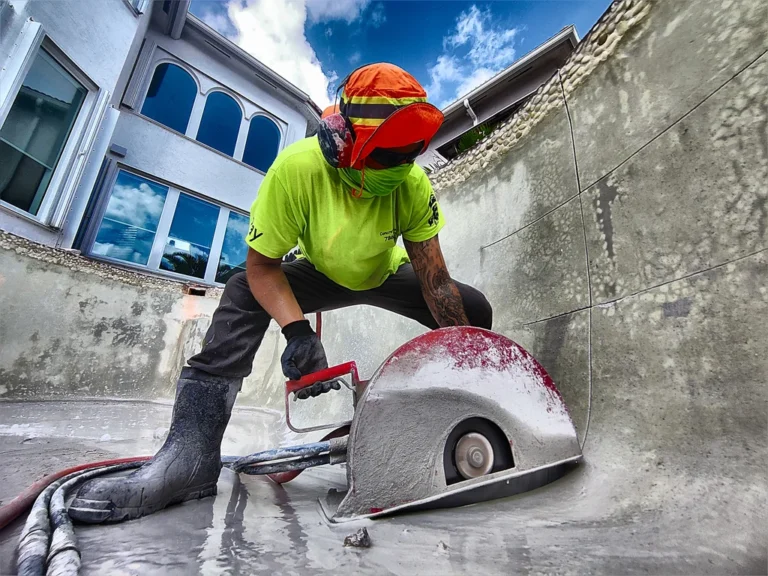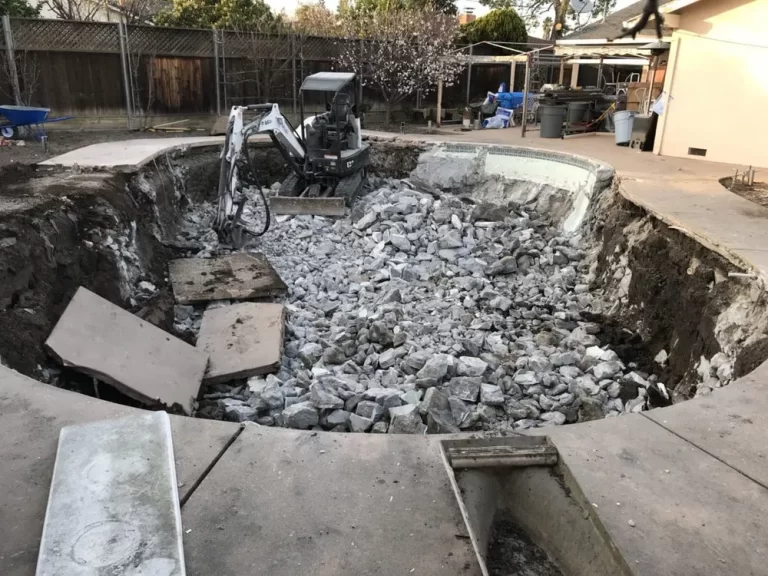Financial Freedom: Maximizing Savings with Pool Removal
Many people dream of financial freedom, looking for ways to cut costs and make smarter financial choices. Having a pool in the backyard might seem like luxury, but it can be a hidden financial burden. From maintenance costs to increased home insurance, pools can be costly to keep. Removing a pool can significantly reduce these expenses, leading to greater savings in the long run.
Pool removal not only cuts down on immediate costs but also lowers long-term financial commitments. Regular maintenance, repairs, and potential increases in utility bills all add up over time. By eliminating these expenses, homeowners can allocate funds to more productive areas.
Additionally, a house without a pool appeals to a wider range of buyers. It often boosts the appeal of the property in the real estate market, potentially increasing its value. This wider market appeal can be a smart financial move, making the decision to remove a pool beneficial not just for current budget concerns, but also for future financial gain.
Understanding Pool Removal
Removing a pool can lead to significant cost savings. This section explores why many opt to remove their pools and the different methods available for doing so.
Reasons for Pool Removal
Pools can be expensive to maintain, often resulting in high utility bills, maintenance fees, and insurance costs. Some homeowners find the upkeep overwhelming and not worth the enjoyment they get. Older pools may suffer from leaks or outdated equipment, which can be very costly to repair.
Safety is another reason people choose pool removal. Families with small children might feel the risk of accidents is too high. Real estate decisions also play a role. Some buyers might prefer more yard space, so removing a pool can add value to a home.
Types of Pool Removal
Two main options exist: partial pool removal and full pool removal. Partial removal involves draining the pool and punching holes in its bottom to prevent water accumulation. The pool is then filled with dirt or gravel. This method is cheaper and faster but might affect property value.
Full removal is more comprehensive. The entire pool structure is removed from the ground. Though more expensive, this method has benefits. It reduces long-term liability and results in an open space that can be repurposed. Service providers, like those offering expert pool demolition services, can assist in selecting the best option for your needs.
The Financial Side of Pool Removal
Removing a pool might seem costly, but it can lead to significant savings over time. This article breaks down costs involved and highlights how comparing quotes can make decisions financially savvy.
Cost Factors in Pool Removal
Various costs come into play when removing a pool. Labor costs significantly affect the total price, as skilled workers are needed for excavation and debris removal. Experienced crews often charge more but complete the job efficiently.
The material of the pool also impacts expenses. Concrete pools generally cost more to demolish than vinyl or fiberglass. Additionally, local regulations may require permits, adding to the overall cost. Homeowners should inquire about these requirements beforehand.
Other considerations include access to the pool area. If access is limited, specialized equipment might be necessary, increasing costs. Costs typically range from a few thousand dollars to higher amounts depending on these factors. Being aware of these variables helps one budget more effectively.
Comparing Pool Removal Quotes
Comparing quotes from different contractors is crucial in managing expenses. Requesting detailed quotes ensures better cost understanding. These should outline all aspects like labor, materials, and debris removal to avoid hidden fees.
Homeowners should also check for references and reviews to ensure they choose a trustworthy contractor. Price shouldn’t be the only consideration; it’s essential to balance costs with the reliability and quality of work.
Obtaining multiple quotes can reveal a range of prices in the industry. This helps identify standard rates and negotiate better deals. Choosing the right contractor can lead to significant savings without compromising quality.
Planning Your Pool Removal Project
Planning a pool removal project requires careful consideration of permits, choosing skilled contractors, and getting ready for the actual removal. Each of these steps is vital for a smooth and cost-effective process.
Permits and Regulations
Before starting the pool removal process, it’s important to check local laws and regulations. Most areas require permits for pool removal. Contacting the local building department will provide guidance on specific requirements.
The application process for permits usually involves submitting a plan of the removal and paying a fee. It’s crucial to have all paperwork in order to avoid delays. Regulations might include proper disposal of materials and ensuring safety standards are met throughout the project.
Choosing the Right Contractor
Selecting a reputable contractor is crucial for a successful pool removal. It’s essential to research and compare different pool removal contractors. Look for contractors with experience and positive customer reviews. Licensing and insurance are important factors, as they protect against potential liabilities.
It can be helpful to get quotes from multiple contractors to understand pricing. Ask potential contractors about their pool removal process and timeframe. Clear communication helps ensure the contractor understands your goals and any specific requirements.
Preparing for Pool Removal
Preparation is key to ensuring the removal goes smoothly. Start by discussing a timeline with the contractor, so everyone knows what to expect. Clear the area around the pool of any objects that could obstruct the work. Letting neighbors know in advance can reduce disturbances.
You might need to prepare for a temporary increase in noise and dust. It’s also a good idea to locate utility lines and mark them. Some contractors will handle this, but knowing where lines are can prevent unexpected issues during removal.
Executing the Pool Removal
Removing a pool involves a few critical steps that must be done correctly to ensure safety and cost-effectiveness. Key tasks include draining and demolishing the pool, handling debris, and filling in the area with suitable materials. Each stage must be handled with care to minimize complications and expenses.
Pool Draining and Demolition
The first step in removing a pool is draining it completely. It requires proper planning to safely manage the water. Before starting, check for local regulations about pool drainage to avoid any violations. Water can be drained via pumps and should be directed to a designated drainage area to prevent flooding or soil erosion.
After draining, the pool structure is demolished. This involves breaking down concrete or fiberglass, using tools like jackhammers or excavators. Professionals ensure the surrounding areas are protected to prevent damage to nearby structures or landscaping. Careful demolition helps in easier debris removal and reduces costs.
Debris Removal and Disposal
Once the pool structure is demolished, debris removal becomes the next focus. This includes removing concrete, rebar, and any other materials. Proper sorting is crucial as some materials may be recyclable, reducing disposal costs.
Hiring a waste disposal service can be beneficial. They handle the transportation and disposal of debris while adhering to environmental regulations. Consider companies that offer recycling options, as reusing materials can be both economical and environmentally friendly.
Filling in the Pool
The final step is the pool fill-in. The choice of fill material is important as it affects future landscaping or construction on the site. Common fill materials include gravel, soil, and sand. Gravel is often preferred for its excellent drainage properties.
After selecting the fill material, it’s essential to compact it in layers. This ensures the area is stable and prevents future settling issues. Proper filling creates a solid base for new landscaping ideas or structures. Each layer must be compacted with tools like a plate compactor to ensure stability and uniformity.
Post-Removal Considerations
After removing a pool, homeowners have several factors to think about, such as what to do with the new yard space and how the change might affect their property’s value. Thoughtful decisions in these areas can result in a more pleasing outdoor space and potentially higher appeal to future homebuyers.
Landscaping After Pool Removal
When a pool is removed, it leaves behind a blank canvas. Homeowners can choose to add garden beds to bring in flowers or vegetables. Grasses and shrubs can also be planted to create a lush landscape. Alternatively, installing a patio or deck can create an inviting outdoor area for relaxation or gatherings.
Landscape repair might involve bringing in fresh soil or leveling the ground. It’s essential to ensure proper drainage to avoid water problems. Planning this carefully is vital for maintaining a healthy and attractive yard. Consulting with a landscaping professional can ensure the work is done efficiently and aligns with the homeowner’s vision.
Impact on Home Value
Pool removal can alter a home’s market value, often in positive ways. Some buyers appreciate the easier maintenance and safety of homes without pools. Families with young children and those seeking more green space are often more interested. This can broaden the market appeal and possibly increase interest from future buyers.
The extra yard space can be a significant selling point. Homebuyers may imagine it as an area for kids to play or for a new, custom outdoor feature. While some people desire a home with a pool, many appreciate the versatility and lower upkeep made possible through its removal.
Long-Term Benefits of Pool Removal
Removing a pool can increase financial freedom by significantly reducing ongoing maintenance costs. Pools often require regular cleaning, chemical treatments, and repairs, which can add up over time. By eliminating these expenses, homeowners can allocate funds to other important financial goals.
Another benefit is the potential to boost property value. Some buyers may view pools as liabilities due to the upkeep and safety concerns they present, especially for families with young children or pets. Removing the pool might make the property more appealing to a broader range of potential buyers.
Environmental impact is also a crucial factor. Pools consume large amounts of water, and removing them can lead to more sustainable water usage, especially in drought-prone areas. Additionally, it reduces the chemical runoff that can negatively affect the surrounding environment.
Savings can accumulate over the years. Without a pool, energy bills may decrease since pumps and heaters are no longer needed. These savings add to a long-term budget that benefits the homeowner.
Consider the equity gains when no funds are wasted on unnecessary luxuries. With the increased savings, homeowners can focus on enhancing other aspects of their homes, thereby gaining a more valuable asset in the long run.







